Titelberg
Q1463952Titelberg: modern name of a Celtic hillfort in Luxembourg, probably the main settlement of the tribe of the Treveri.
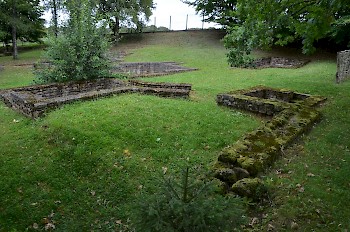
The Treveri were an ancient tribe, living in the Ardennes Hills in southeastern Belgium, Luxembourg, and western Germany. Julius Caesar implies that they inhabited the land between the river Meuse in the west and the Rhine in the east.note The names and material culture of the Treveri were Celtic, although they claimed Germanic origins.note However, this is not confirmed in other sources and the claim probably only means that (some of) the Treveri had once arrived from across the Rhine.note
At first, the Treveri had several hillforts of comparable importance (Kastel, Martberg, Otzenhausen, Titelberg, Wallendorf, and perhaps Donnersberg),note but from the beginning of the first century BCE on, the Titelberg became the main settlement and was the place where the Treveri minted their coins. Other tribes underwent a similar development from several centers to one central town.
When it rose to priminence, the Titelberg settlement already had a history of its own. Some archaeological finds date back to the twentieth century BCE, while the hillfort was permanently in use since about 300 BCE (in the Middle La Tène Period). In the first century the town grew and would eventually occupy an oval-shaped, steep-sided platform of some forty-three hectares, only accessible from the southeast. Its expansion must have had something to do with the fact that the Titelberg was close to the Rhône-Saône-Moselle-Rhine axis, which was joined at this point by the road from Durocortorum (Reims), the main center of Champagne.
The smelting of iron ore must have been important: iron could be exported. Among the imports were wine, olive oil, Italian ceramics, and bronze objects. The presence of various kinds of Gallic coins confirms that the Titelberg was a market town.
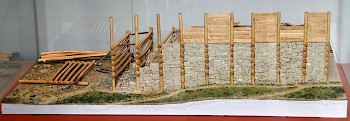
The site was surrounded by a murus Gallicusnote that was about nine meters high. Inside was a living area, where local noblemen must have had their dwellings. In the southeast, there was a quarter for the artisans, separated from the residential area in the northwest by a ditch that was some four meters wide. A fourteen meter long hall may have served as meeting place for political deliberations.
In the mid-first century BCE, Caesar conquered Gaul. At first, not much changed, but in the mid-thirties BCE, the hillfort was rebuilt. The murus Gallicus was demolished (although a part was left in the southeast), and at least two new roads were built, perpendicular to the main road. Several houses were rebuilt with stone cellars.
At the beginning of the common era the residential area was abandoned: the people must have moved to the new capital of the Treveri, Augusta Treverorum (modern Trier). The site remained in use for metal working and the workers still used the old hall, which was by now a temple in the normal Gallo-Roman style (i.e., surrounded with a porch). A coin from the reign of Constantine II (r.337-340) proves continued or renewed occupation in the fourth century. The temple remained in use, although not necessarily for religious purposes, well into the Frankish era.
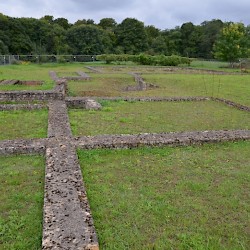 Titelberg, Roman remains |
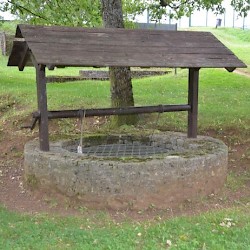 Titelberg, Well |
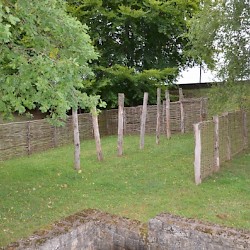 Titelberg, Farm wall |
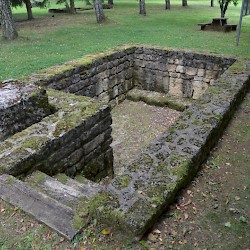 Titelberg, Cellar |
Getting there
Although the site is closest to the village of Lamadelaine, which is situated on the northern slope of the TItelberg, it best approached from the south, from Niederkorn. Follow directions to Fond-de-Gras. There is a parking place called Titelberg, about half a kilometer before the Minett Park Fond-de-Gras (an open air museum).